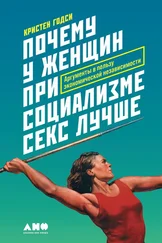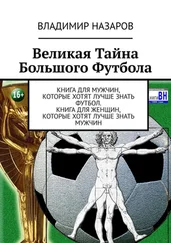L. Goldstein, “Early Feminist Themes in French Utopian Socialism: The St.-Simonians and Fourier,” Journal of the History of Ideas 43, no. 1 (1982); “Degradation of Women in Civilization,” Théorie des Quatre Mouvements et des Destinées Générales ( The Theory of the Four Movements and of the General Destinies ), 3rd ed. (originally published in 1808, this ed. 1841–1848, reprinted in Women, the Family, and Freedom: The Debate in Documents, Volume One, 1750–1880 , edited by Susan Groag Bell and Karen M. Offen (Stanford, CA: Stanford University Press, 1983), 40–41.
S. Joan Moon, “Feminism and Socialism: The Utopian Synthesis of Flora Tristan,” in Socialist Women: European Socialist Feminism in the Nineteenth and Early Twentieth Centuries , edited by Marilyn J. Boxer and Jean H. Quataert (New York: Elsevier, 1978).
Friedrich Engels, The Origin of the Family, Private Property, and the State , 1884, www.marxists.org/archive/marx/works/1884/origin-family/ch02c.htm.
Engels, The Origin of the Family .
См. также: Rochelle Ruthchild, Equality and Revolution: Women’s Rights in the Russian Empire 1905–1917 (Pittsburgh: University of Pittsburgh Press, 2010), 235, and Rochelle Ruthchild, “‘Going to the Ballot Box Is a Moral Duty for Every Woman’: The Great War and Women’s Rights in Russia,” in Russia’s Home Front in War & Revolution, 1914–22, Book 2: The Experience of War and Revolution , edited by Adele Lindenmeyr, Christopher Read, and Peter Waldron (Bloomington, IN: Slavica, 2018), 1–38.
Louise Bryant, “Mirrors on Moscow,” 1923, www.marxists.org/archive/bryant/works/1923-mom/kollontai.htm.
R. C. Elwood, Inessa Armand: Revolutionary and Feminist (New York: Cambridge University Press, 2002); Robert McNeal, Bride of the Revolution: Krupskaya and Lenin (Ann Arbor: University of Michigan Press, 1972); Cathy Porter, Alexandra Kollontai: A Biography (Chicago: Haymarket Books, 2014). О русской кампании по распространению грамотности см.: Ben Eklof, “Russian Literacy Campaigns 1861–1939,” in National Literacy Campaigns and Movements: Historical and Comparative Perspectives , edited by Robert F. Arnove and Harvey J. Graff (New Brunswick, NJ: Transaction Publishers, 2008), 128–129; Helen McCarthy and James Southern, “Women, Gender, and Diplomacy: A Historical Survey,” in Gender and Diplomacy , edited by Jennifer Cassidy (New York: Routledge, 2017), 15–31, 24.
Anna Krylova, Soviet Women in Combat: A History of Violence on the Eastern Front (New York: Cambridge University Press, 2011).
Mateja Jeraj, “Vida Tomšič,” in A Biographical Dictionary of Women’s Movements and Feminisms: Central, Eastern and South-Eastern Europe, 19th and 20th Centuries , edited by Francisca de Haan, Krasimira Daskalova, and Anna Loutfi (Budapest: Central European University Press, 2006), 575–579; Chiara Bonfigioli, “Revolutionary Networks: Women’s Political and Social Activism in Cold War Italy and Yugoslavia (1945–1957),” PhD diss., University of Utrecht, 2012.
Kristen Ghodsee, “The Left Side of History: The Legacy of Bulgaria’s Elena Lagadinova,” Foreign Affairs , April 29, 2015, www.foreignaffairs.com/articles/bulgaria/2015-04-29/left-side-history; Kristen Ghodsee, The Left Side of History: World War II and the Unfulfilled Promise of Communism in Eastern Europe (Durham, NC: Duke University Press, 2015); Krassimira Daskalova, “A Woman Politician in the Cold War Balkans: From Biography to History,” Aspasia: The International Yearbook of Central, Eastern, and Southeastern European Women’s and Gender History 10 (2016); and John D. Bell, The Bulgarian Communist Party from Blagoev to Zhivkov (Stanford, CA: Hoover Institution Press, 1985).
“A Girl Who Hated Cream Puffs,” Time , Sept. 20, 1948, 33; W. H. Lawrence, “Aunty Ana,” New York Times , Feb. 29, 1948; Robert Levy, Ana Pauker: The Rise and Fall of a Jewish Communist (Berkeley: University of California Press, 2001); Valentina Tereshkova, Valentina Tereshkova, The First Lady of Space: In Her Own Words , Spacebusiness.com, 2015.
Michael Parks, “Profile: Galina Semyonova: No Mere Token in Soviet Politburo,” Los Angeles Times , Jan. 15, 1991, articles.latimes.com/1991-01-15/news/wr-327_1_soviet-union; Leonid Lipilin, “Woman of Action,” Soviet Life (March 1991): 22–23; Bill Keller, “A Soviet Woman’s Point of View,” New York Times , Jan. 24, 1989, www.nytimes.com/1989/01/24/world/a-soviet-woman-s-point-of-view.html.
. Women in the Politics of Postcommunist Eastern Europe , edited by Marilyn Rueschemeyer (Armonk, NY: M. E. Sharpe, 1998); Marilyn Rueschemeyer and Sharon Wolchik, editors, Women in Power in Post-Communist Parliaments (Bloomington: Indiana University Press, 2009 ); The World’s Women 1970–1990: Trends and Statistics , United Nations, 1991; Kerin Hope, “Bulgaria Builds on Legacy of Female Engineering Elite,” Financial Times , March 9, 2018, www.ft.com/content/e2fdfe6e-0513-11e8-9e12-af73e8db3c71; Peter Lentini, “Statistical Data on Women in the USSR,” Lorton Paper #10, 1994.
Susan Wellford, “A Quota Worth Making,” U. S. News and World Report , Feb. 21, 2017, www.usnews.com/opinion/civil-wars/articles/2017-02-21/the-us-should-consider-gender-quotas-to-increase-women-in-politics.
Квоты не только способствуют гендерному разнообразию, но и в целом увеличивают выбор квалифицированных кандидатов. Имеются некоторые свидетельства того, что корпорации с более разнообразным составом совета директоров более прибыльны. Marcus Noland, Tyler Moran, and Barbara Kotschwar, “Is Gender Diversity Profi able? Evidence from a Global Survey,” Working Paper Series of the Peterson Institute for International Economics, Feb. 2016; Margarethe Weirsema and Marie Louise Mors, “What Board Directors Really Think of Gender Quotas,” Harvard Business Review , Nov. 14, 2016; Oliver Staley, “You Know Those Quotas for Female Board Members in Europe? They’re Working,” Quartz.com, May 3, 2016, qz.com/674276/you-know-those-quotas-for-female-board-members-in-europe-theyre-working; and Daniel Boffey, “EU to Push for 40 % Quota for Women on Company Boards,” Guardian (London), Nov. 20, 2017, www.theguardian.com/world/2017/nov/20/eu-to-push-for-40-quota-for-women-on-company-boards.
Pew Research Center, Women and Leadership: Public Says Women Are Equally Qualified, but Barriers Persist , Jan. 14, 2015, www.pewsocialtrends.org/2015/01/14/women-and-leadership.
The Rockefeller Foundation, “Women in Leadership: Why It Matters,” May 12, 2016, www.rockefellerfoundation.org/report/women-in-leadership-why-it-matters, and KPMG, “KPMG Women’s Leadership Study,” Sept. 13, 2016, home.kpmg.com/ph/en/home/insights/2016/09/kpmg-women-s-leadership-study.html.
Читать дальше
Конец ознакомительного отрывка
Купить книгу
![Кристен Годси Почему у женщин при социализме секс лучше [Аргументы в пользу экономической независимости] [litres] обложка книги](/books/394862/kristen-godsi-pochemu-u-zhenchin-pri-socializme-seks-cover.webp)


![Дженнифер Лэнг - Секс без риска [Вопросы о сексе, которые стрёмно обсуждать с родителями и даже с друзьями] [litres]](/books/390811/dzhennifer-leng-seks-bez-riska-voprosy-o-sekse-ko-thumb.webp)
![Люкс Альптраум - Притворство [Почему женщины лгут о сексе и какая правда за этим скрывается] [litres]](/books/395418/lyuks-alptraum-pritvorstvo-pochemu-zhenchiny-lgut-o-thumb.webp)
![Светлана Шишкина - Любить. Считать [Как построить крепкие и здоровые отношения на основе финансовой независимости] [litres]](/books/397462/svetlana-shishkina-lyubit-schitat-kak-postroit-kr-thumb.webp)






